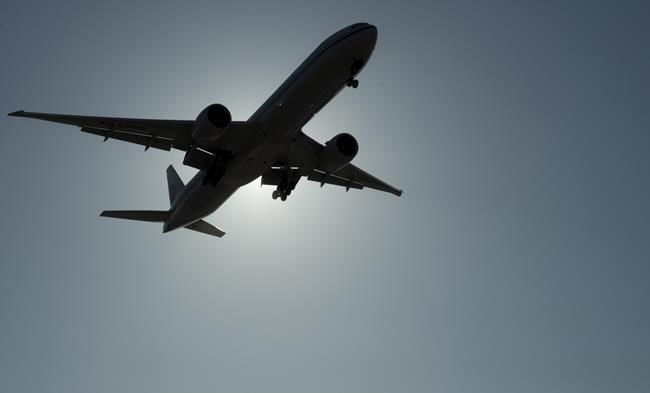Ross Aimer still recalls the snow-white Russian tundra unfurling on the horizon during flights he piloted between the U.S. and Asia.
“In summertime, it's all daytime flying. That's beautiful views,” said Aimer, CEO of California-based Aero Consulting Experts and a former United Airlines captain.
Those vistas are no longer available to flight crews from many Western countries. Russia barred Canadian, American, British and European Union operators from its airspace more than a year ago in response to airspace prohibitions against it by those states and others that support Ukraine, after Moscow invaded its neighbour in February 2022.
European airlines are among the most affected, having to reroute planes on hours-long detours to reach Asia and parts of the Middle East.
But Canadian carriers are impacted too, with planes en route to East Asia and South Asia forced to skirt around Russian airspace daily, and no sign of relief on the radar. The detours mean longer trips, greater fuel and labour costs and ultimately higher fares for passengers amid soaring inflation and already pricey international travel.
“It's definitely a negative for U.S. airlines and for Canadian airlines. It is definitely an issue,” said Helane Becker, an aviation analyst with TD Cowen.
Flight paths to Asia don’t cut straight across the Pacific Ocean, but rather run the shortest possible distance by tracing an arc through the Arctic — and, before the airspace bans, through eastern Russia.
“The optimal flight route between Canada and Southeast Asia and everything in between would have you pass through parts of Russian airspace, from the point basically north of the Korean Peninsula and then down,” said former Air Canada chief operating officer Duncan Dee.
The adjusted routes, marked on flight-tracking apps that show a steady stream of jetliners skirting Russian airspace over the Bering Sea, can be 10 per cent longer in distance than before the war. That applies for flights from Vancouver to Hong Kong or from Toronto to Delhi, said Robert Kokonis, president of consulting firm AirTrav Inc. Other non-stop routes, such as Vancouver to Bangkok or Seoul, would also need a course correction.
The extra fuel burned as a result is no rounding error. Though down from its peak last June, jet fuel’s price of US$2.68 per gallon in March still marks a 41 per cent jump from four years earlier.
“That adds to the ticket price for the consumer,” Becker said.
One-way Air Canada fares from Vancouver to Hong Kong rose 41 per cent between January 2019 and January 2023, according to flight data firm Cirium. The airline’s flights from Toronto to Delhi cost 47 per cent more over the same time period.
In contrast, the average fare for all flights — not just Air Canada’s — between Vancouver and Hong Kong actually dropped by 22 per cent between January 2019 and January 2023. Trips between Toronto and Delhi saw prices rise just 25 per cent. Those corridors are used by carriers that include China Airlines, Cathay Pacific, Korean Air and Air India — all of which are exempt from Russia’s airspace ban and enjoying a lower cost per trip.
That puts Air Canada and other barred airlines at a competitive disadvantage, said Aimer, who last piloted a plane over Russia some two decades ago.
“Every minute you add, the cost goes up,” he said. “If you could go over the (North) Pole, you save up to one or two hours. Now you have to go a more southerly route.
“Western airlines that do not go over Russian territory … are at a financial disadvantage,” he said. “Most of the northern part of the world is Russian airspace.”
Asia isn't Air Canada’s biggest market, but it is a substantial slice. Flights to Pacific countries accounted for more than 14 per cent of its $17.23-billion revenue in 2019. Moreover, travel between China and North America has been ramping up since the former began to reopen after prolonged COVID-19 travel restrictions — meaning western airlines may contend with thinner margins on a crowded field.
"Many of Air Canada’s routes to Asia, India and the Middle East have had some rerouting due to the prohibition on Russian airspace," said spokesman Peter Fitzpatrick in an email. Some, such as Vancouver-Delhi, have been suspended.
"Longer routes increase costs and fuel consumption and reduce passenger capacity and cargo loads, making certain routes uncompetitive and/or uneconomically viable."
Industry group Airlines for America has pegged the lost annual market share of U.S. carriers at about US$2 billion per year, noting that some planned routes have been put on hold thanks to the ban.
The group has pressed the White House and Congress to bar airlines that still fly over Russia from landing or departing at U.S. airports – effectively subjecting those carriers to the same restrictions facing U.S. airlines.
Air Canada said governments should "ensure there is a level playing field that provides for fair competition and equitable opportunities for all carriers," but did not specify how that might translate to policy.
Canada’s biggest carrier might take comfort in its profit-sharing deal with Air China, part of a code-share agreement that sees each airline market flights operated by the other under its own banner.
But Air Canada runs its own flights to some of Asia’s biggest air hubs, meaning the trips remain subject to Moscow’s prohibition.
“Code-shares are obviously advantageous, but not to a point that you give up that route — surrender it to a code-share partner. You’d make a little bit of money, but not as much as you would if you flew it to yourself,” Aimer said.
This report by The Canadian Press was first published April 23, 2023.
Companies in this story: (TSX:AC)
Christopher Reynolds, The Canadian Press





